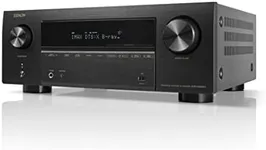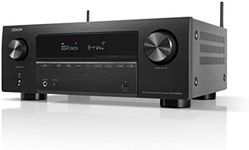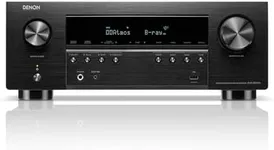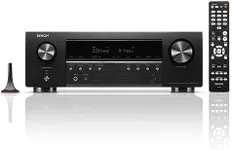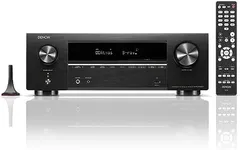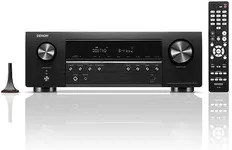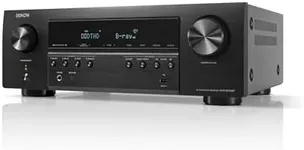Buying Guide for the Best Av Receivers
Choosing the right AV receiver can make a big difference in your home entertainment experience. An AV receiver acts as the central hub for your audio and video equipment, connecting your TV, speakers, gaming consoles, streaming devices, and more. The right receiver will ensure you get the best sound and picture quality, as well as the flexibility to expand your system in the future. When shopping for an AV receiver, it's important to consider your room size, the number of devices you want to connect, and the type of content you enjoy most. Understanding the key specifications will help you find a model that fits your needs and enhances your setup.Number of ChannelsThe number of channels refers to how many speakers the receiver can power at once. This is important because it determines the surround sound setup you can achieve. Common options include 5.1, 7.1, and even higher channel counts. A 5.1 system supports five speakers and one subwoofer, which is great for most living rooms and basic home theaters. A 7.1 system adds two more speakers for a more immersive experience, ideal for larger rooms or those who want a more cinematic feel. If you plan to use height speakers for 3D audio formats, look for receivers with even more channels. Choose the number of channels based on your room size and how many speakers you want to use now or in the future.
Power OutputPower output tells you how much power the receiver can send to each speaker, usually measured in watts per channel. This affects how loud and clear your audio will be, especially at higher volumes. Lower power (around 50-70 watts per channel) is fine for small rooms and efficient speakers, while higher power (100 watts or more per channel) is better for larger rooms or less sensitive speakers. Consider your room size, how loud you like to listen, and the type of speakers you have when deciding how much power you need.
Audio and Video Inputs/OutputsInputs and outputs are the ports where you connect your devices, such as TVs, gaming consoles, Blu-ray players, and streaming boxes. The number and type of connections determine how many devices you can hook up and what kind of signals the receiver can handle. HDMI ports are the most important for modern setups, as they carry both audio and video. Make sure the receiver has enough HDMI inputs for all your devices, and check for features like HDMI ARC or eARC for easier TV connection. Also, look for other connections you might need, like optical, coaxial, or analog audio inputs. Think about all the devices you want to connect now and in the future to choose a receiver with the right mix of ports.
Supported Audio FormatsSupported audio formats refer to the types of surround sound and advanced audio the receiver can decode and play. Common formats include Dolby Digital, DTS, Dolby Atmos, and DTS:X. Basic formats like Dolby Digital and DTS are enough for standard surround sound, while Dolby Atmos and DTS:X add height channels for a more immersive, 3D sound experience. If you want the latest movie theater-like sound, look for receivers that support these advanced formats. Your choice should depend on the type of content you enjoy and whether you plan to use height or ceiling speakers.
Wireless ConnectivityWireless connectivity includes features like Bluetooth, Wi-Fi, and support for streaming services or multi-room audio systems. Bluetooth lets you play music from your phone or tablet, while Wi-Fi can enable streaming from online services or integration with smart home systems. Some receivers also support wireless speakers or multi-room setups. If you want to stream music easily or control your receiver with an app, look for models with strong wireless features. Consider how you like to listen to music and whether you want to expand your system wirelessly.
Room CalibrationRoom calibration is a feature that automatically adjusts the sound settings of your receiver to match your room's acoustics. This is important because every room sounds different, and calibration helps you get the best possible audio quality. Systems use a microphone to measure sound and then adjust speaker levels, distances, and other settings. If you want the easiest way to get great sound without manual tweaking, look for a receiver with automatic room calibration. This is especially helpful in rooms with unusual shapes or furniture placement.
Video CapabilitiesVideo capabilities refer to the receiver's ability to handle different video resolutions and features, such as 4K, 8K, HDR, and video upscaling. If you have a 4K or 8K TV, make sure your receiver can pass through these signals without losing quality. HDR support (like HDR10 or Dolby Vision) ensures you get the best picture quality from compatible sources. Video upscaling can improve the look of lower-resolution content. Choose video features based on your TV and the type of content you watch, so you get the best possible picture.

